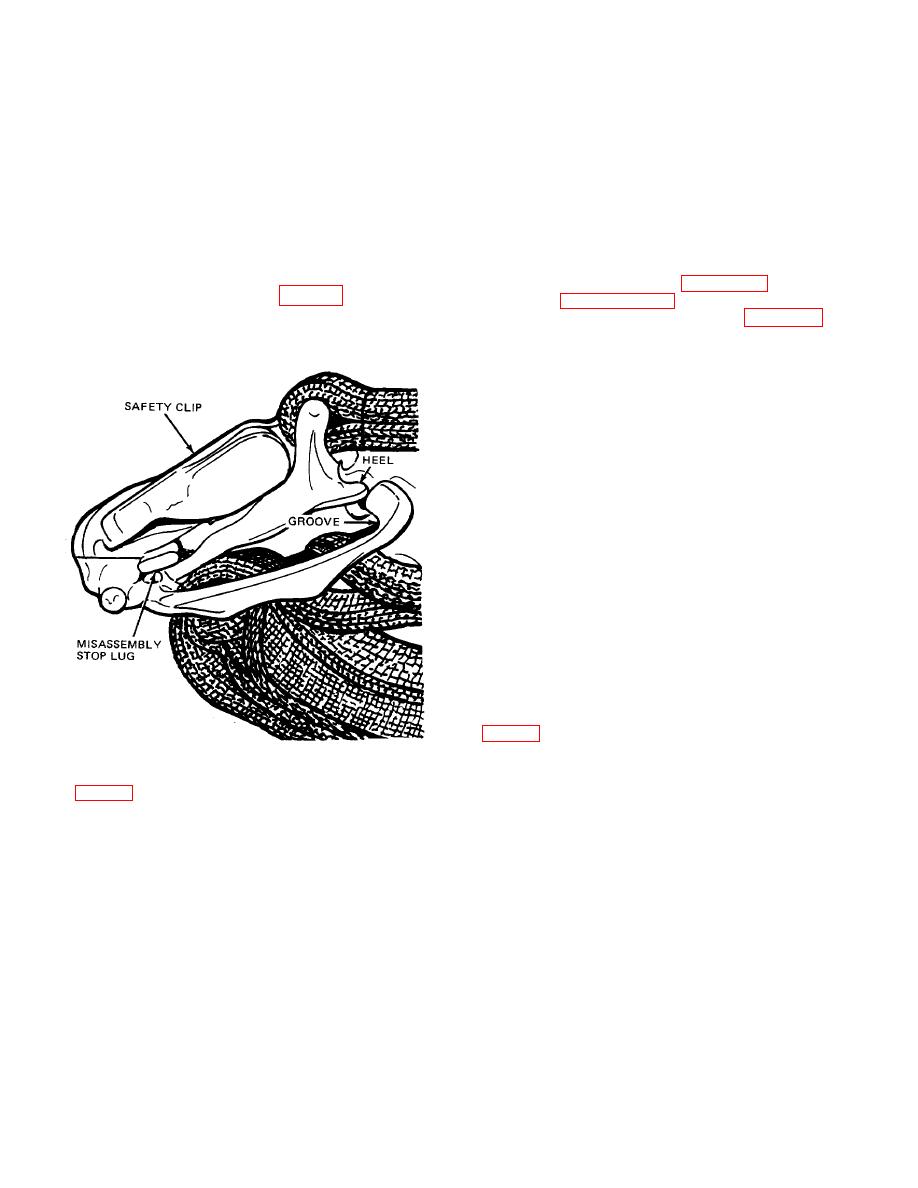
TM 10-1670-201-23
T.O. 13C-1-41
NAVAIR 13-1-17
e. Operate the latch and check for the ease of
(1) Separate the riser fitting from the harness
fitting.
operation.
(2) Reengage the release by placing the toe
f. Close and lock the latch in position.
of the riser male fitting into the slot under the harness
fitting misassembly stop lug. Do not allow the riser male
g. Fit the heel of the safety clip into position at the
fitting heel to engage the slot of the harness female
heel of the latch (C) and close the safety clip
fitting.
h. Cable Loop Type Canopy Release. The cable
(3) Attempt to close the latch.
If the
loop type canopy release will be assembled as
misassembly stop lug engages the male fitting and the
illustrated in A through F of figure 2-8.1 and tested as
latch can be closed and locked fig. 2-8), the canopy
outlined in paragraphs 2-19a through g. Make sure that
release is defective and will be removed from service.
cable loop is secured as shown in D of figure 2-8.1.
If the latch cannot be closed, the canopy release is
considered serviceable.
2-20. Testing a Ripcord.
except those used in ejection-seat systems, will be
tested on a one-time basis during initial entry into
service. The test which will affect each of the locking
pins on a ripcord and the ripcord grip, will be performed
using a ripcord inspection kit and the following
procedures.
NOTE
A strip of yellow pressure-sensitive
tape wrapped around the center of a
ripcord grip signifies the ripcord has
been tested previously and as a
result does not require testing again.
However, if the serviceability of the
grip or any locking pin on the ripcord
length is questionable, the ripcord
may be subjected to testing.
(1) Ripcord locking pin test.
(a) Insert 1/2 inch of a locking pin end
into the hole of a fixed ripcord locking pin test block (A,
fixed position.
d. Fit the toe of the riser male fitting into the
groove of the harness female fitting and close the latch
(B, fig. 2-7). Insure the latch is locked securely.
Change 4
2-14

